Last week I was chatting with a friend when she mentioned a dog she’d seen at the marina where she’s staying. The story she shared broke my heart. It reminded me how difficult traveling with fearful dogs can be. And I felt grateful that I’d had the experience myself – it gives me more empathy for those pups and their people.
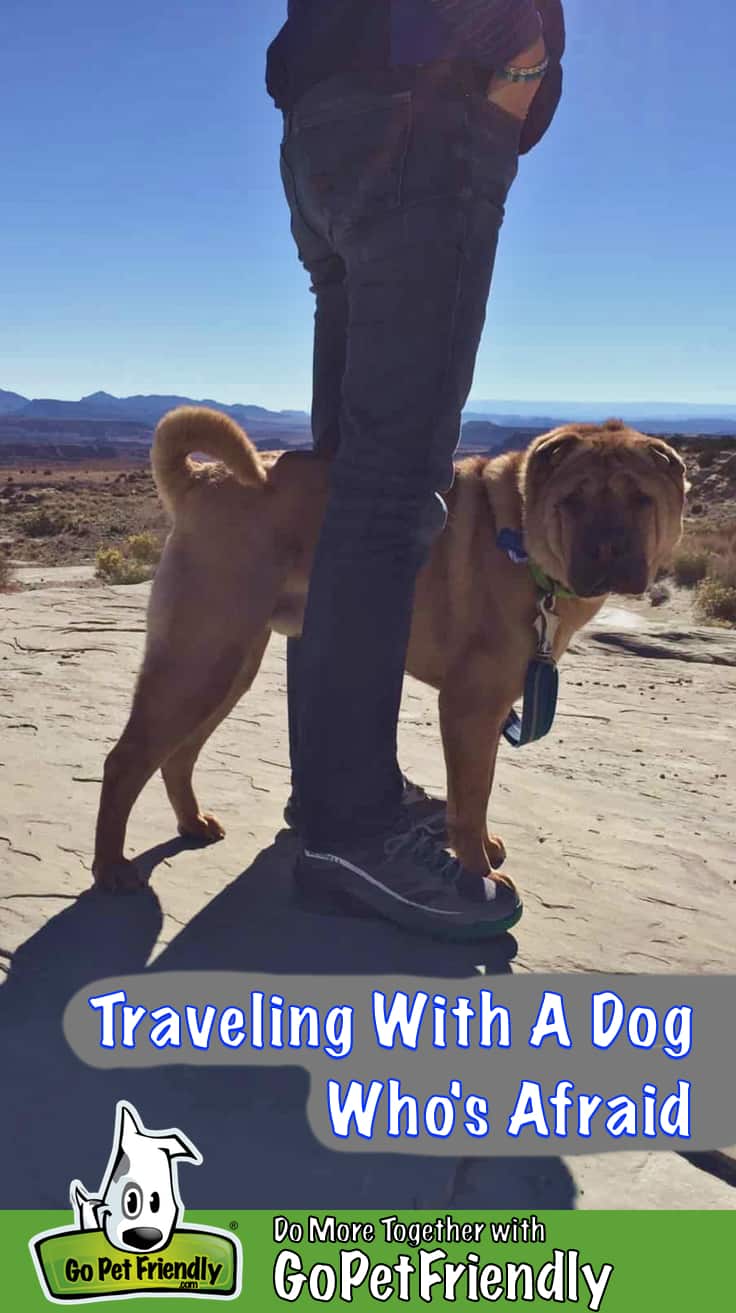
Traveling With Fearful Dogs
If you’re relatively new to this blog, you might only know our current pup, Myles. He’s the happy, goofy boy who loves all dogs and people that we found as a stray in San Antonio.
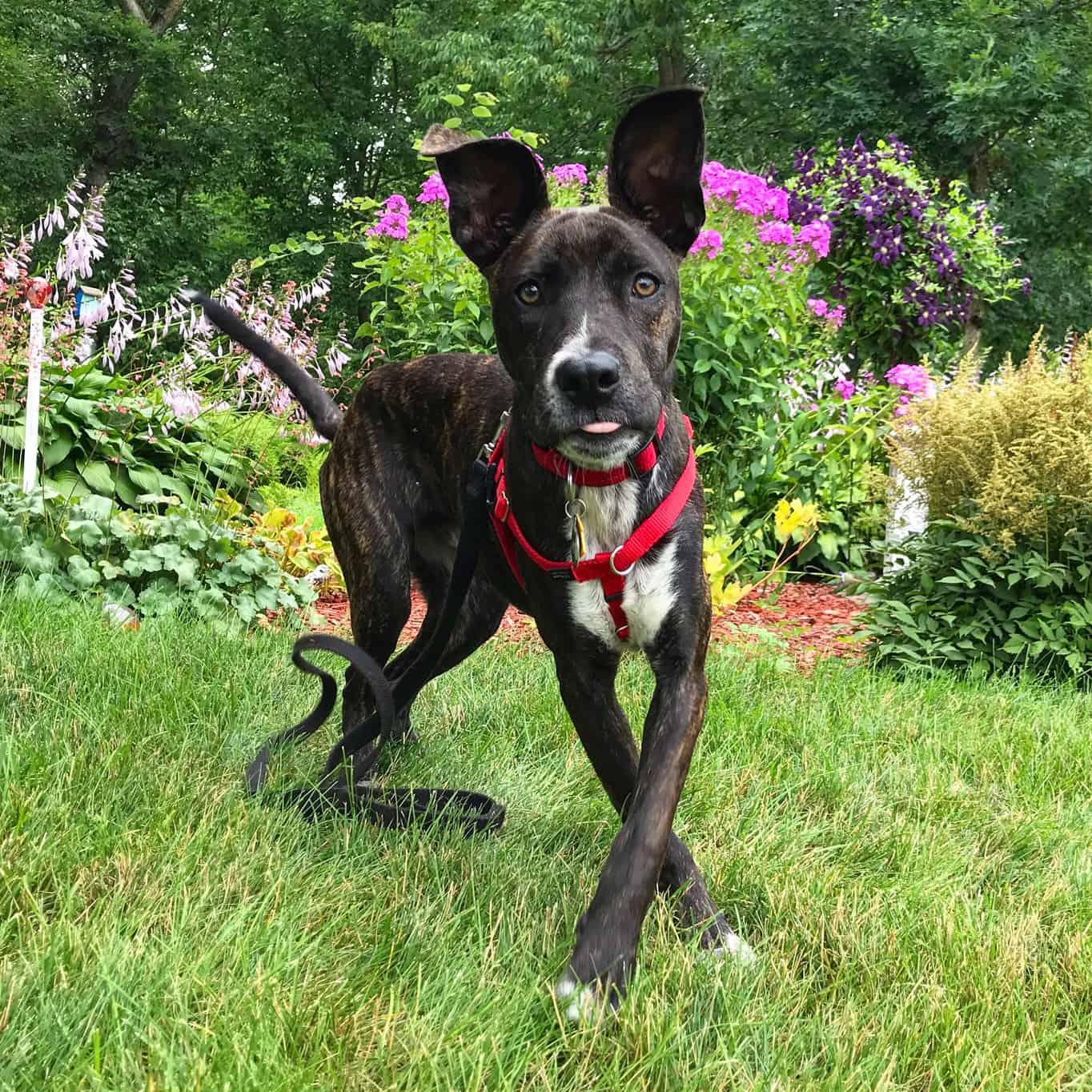
Before Myles, we traveled for ten years with Ty and Buster. And, while we loved them dearly, our boys were not the easiest travel companions.
Buster was also a stray who was about a year old when he found us in 2008. We guessed he missed out on socializing with other dogs during his formative puppy months, because he was uncomfortable around most other dogs – especially when he was on leash.
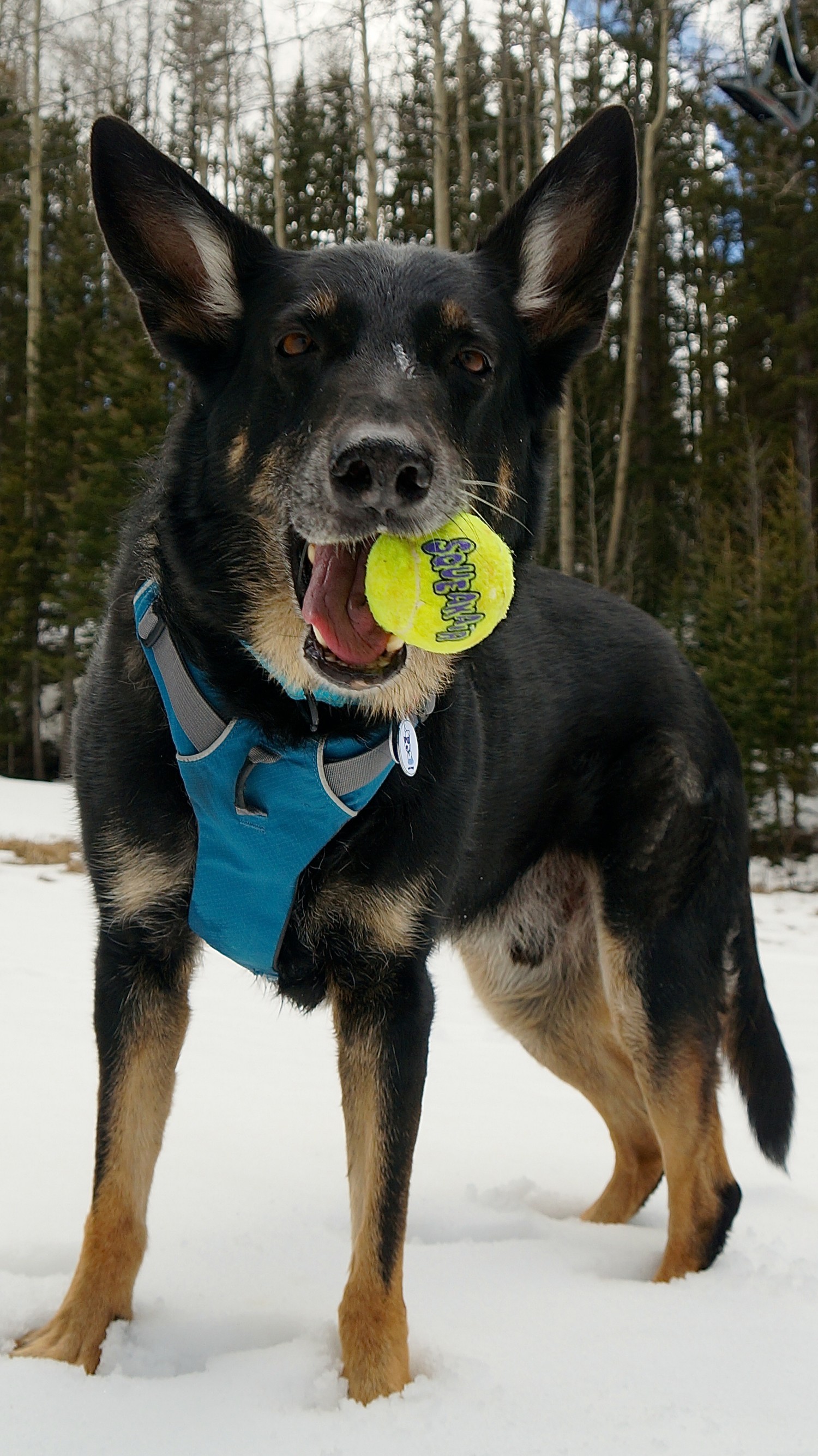
Ty also had fear issues. Even as a little puppy, he was afraid of strangers. And, after being attacked at a dog park when he was six months old, he never cared for other dogs.
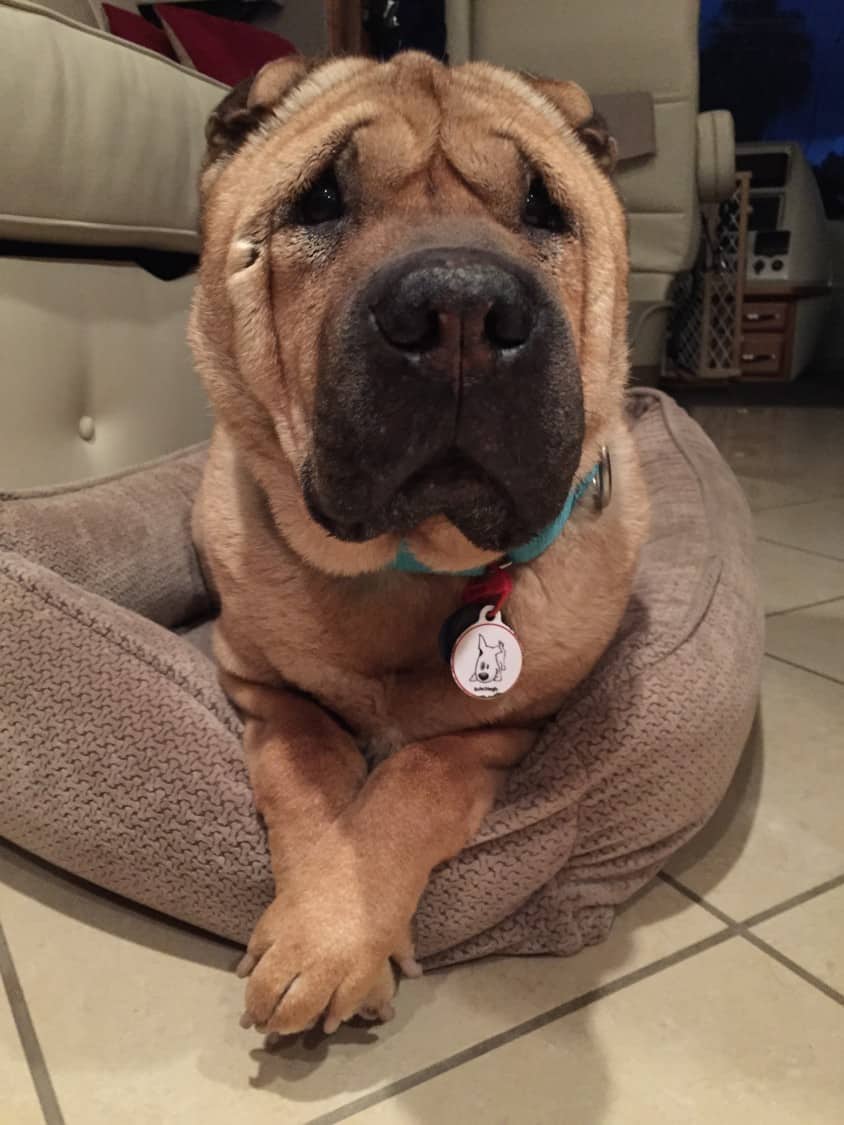
People who met the boys or saw pictures of them traveling around the country often commented on how well-behaved they were. I suppose that was partially true. But the impression they made was due more to our careful management of the situations we put them in. As much as possible, we avoided places and circumstances that triggered their fears.
READ MORE ⇒ The Ultimate Pet Friendly American Road Trip
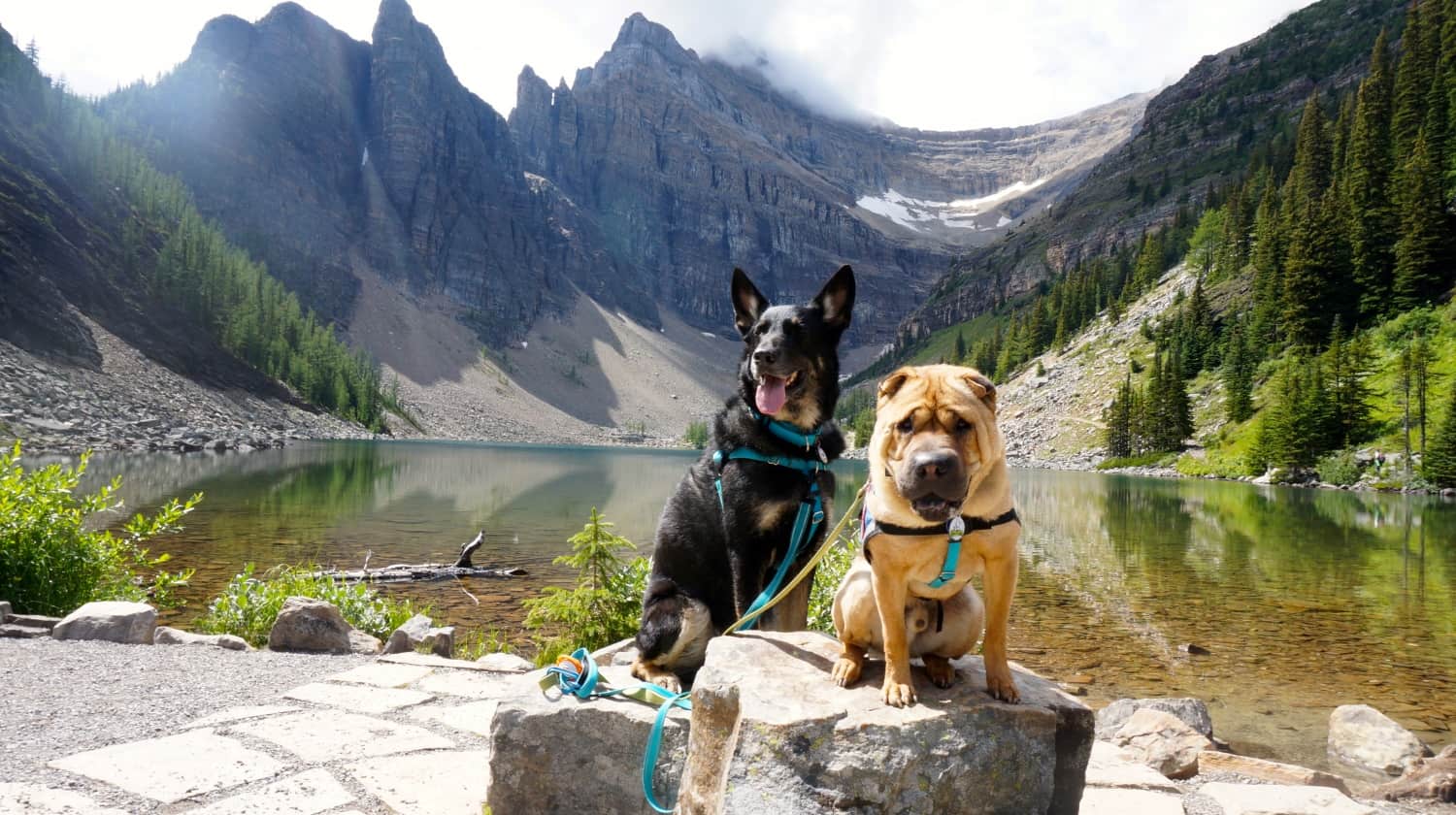
Understanding Fearful Dogs
The friend I was speaking with has also had fearful dogs, so we both felt for the pup she’d seen in the marina. The little dog was doing everything he could to communicate his desire to be left alone. But he was ridiculously cute. And people didn’t seem to understand that his barking and shaking were signs to back off.
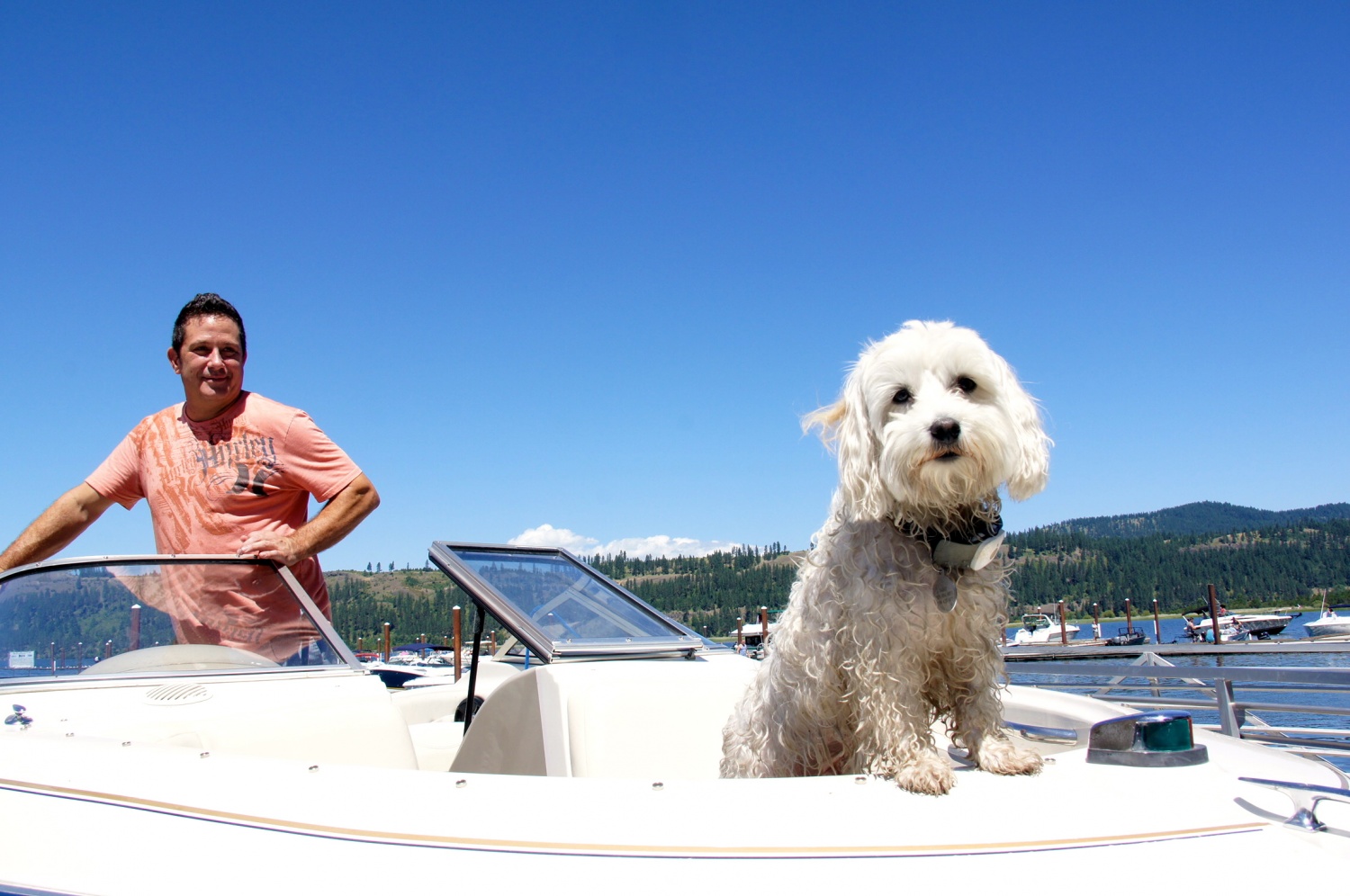
I wish I had a nickel for every time someone replied, “But I’m a dog person!” when I told them Ty didn’t want to be petted. What those people meant was that they loved dogs, and of that I have no doubt. But a true dog person appreciates a dog’s feelings, reads his body language, and respects his space.
Unfortunately for the little dog in the marina, people were approaching and petting him — though that was clearly not what he wanted.
Strategies For Fearful Dogs
To make traveling with our fearful dogs easier, we taught them commands that gave them alternatives to their instinctive behaviors. For example, we taught Buster “find it,” which meant we’d tossed treats on the ground for him to sniff out. We used the command whenever a dog passed close enough to make Buster tense. It kept him from barking and lunging at the other dog.
The command that helped Ty most developed more by accident …
Buster and I were out playing one day, and I decided to add the extra step of him running through my legs after fetching his ball to get his treat. B learned things really quickly, and had it down in no time.
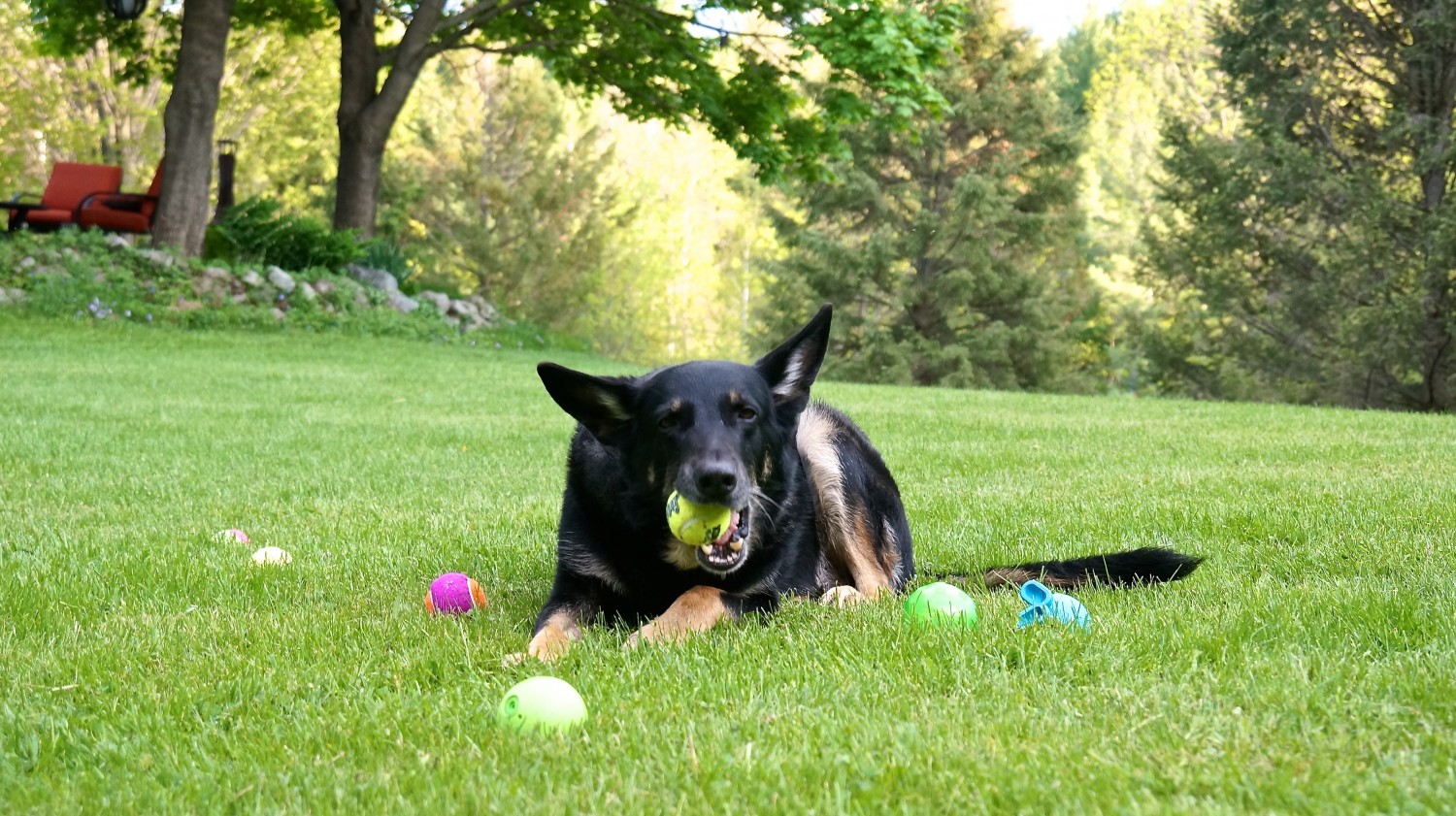
Ty was watching us, so I decided to try it with him, too. Since he never understood the point of fetch, we were just working on him walking through my legs. He got as far as standing between my feet, and never progressed beyond that point.
Rod and thought Ty’s new maneuver was funny. So we called it “parking in the garage” and started giving him treats whenever he did it.
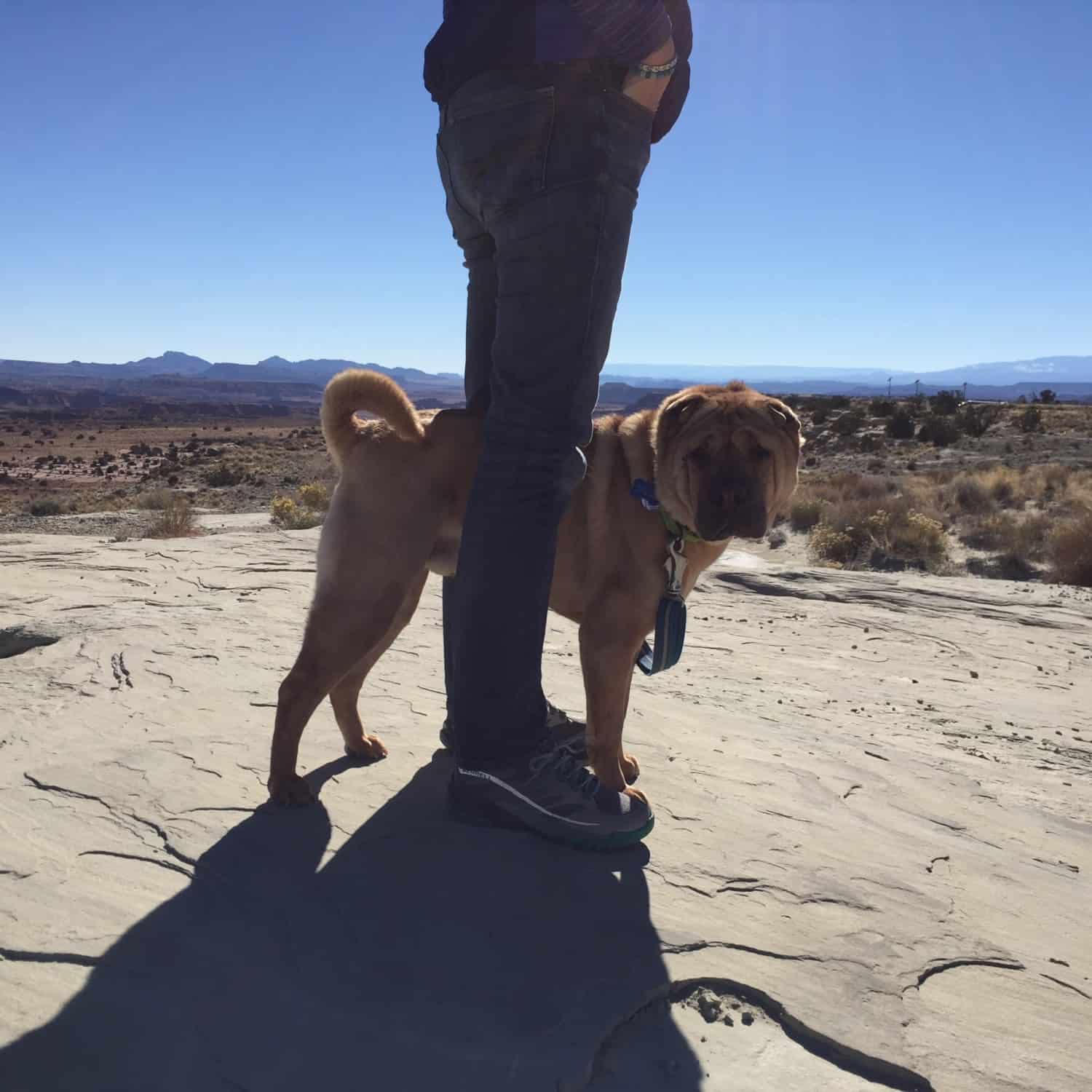
Before long it became a habit for Ty to stand between our legs for a treat whenever we stopped on our walks. It took us a little longer to figure out how useful it was to have Ty in that position!
Work With What Your Dog Gives You
Ty’s fear of strangers made him uncomfortable in crowds and whenever someone he didn’t know stopped to chat. Both of those things happen a lot when you travel as much as we do! But after discovering his “garage,” Ty was able to relax when we were out and about.
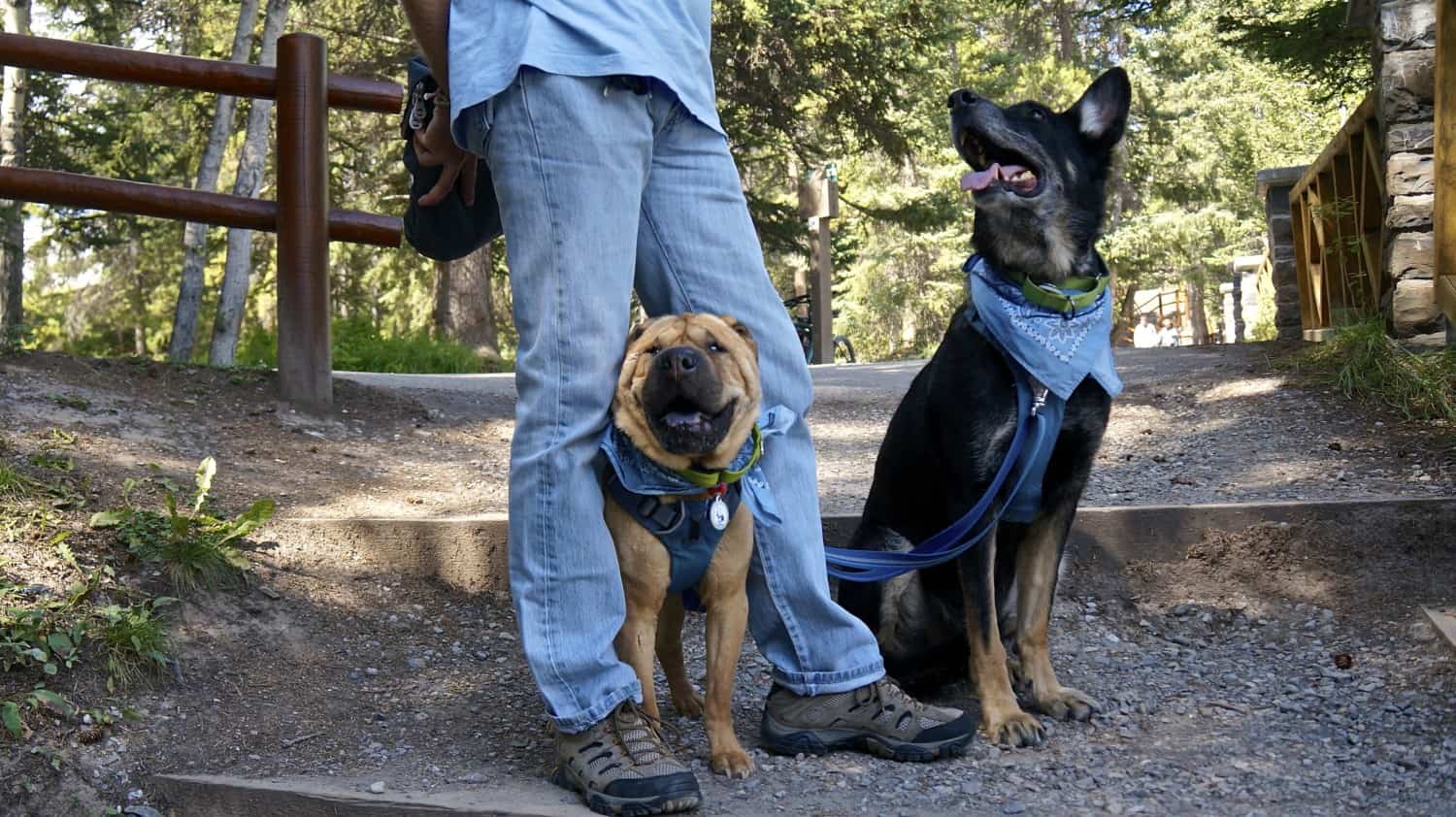
Some of Ty’s most fearful moments were waiting on busy sidewalks to cross the street, watching other hikers pass on crowded trails, standing in line for any reason, and stopping to chat with someone he didn’t know. I imagine he was always worried that someone would try to pet him.
But after he learned “in the garage,” things were different. He seemed to understand that we’d protect him from unwanted advances while feeding him treats, and he was much calmer. This trick also allowed us to relax – knowing exactly where he was and that he was safe. It was a happy accident that worked out beautifully for us all!
In fact, though Myles is the most social dog I know, I’m teaching him to “get in the garage,” too! Sometimes knowing exactly where your dogs is, that he’s not going to be stepped on by other people, and that won’t try to greet a dog who doesn’t want to interact, is priceless.
Dogs Are The Best Teachers
Ty and Buster never completely overcame their challenges. But learning to help them manage their fears made all of our lives better. I hope what they taught me can help those of you traveling with fearful dogs.
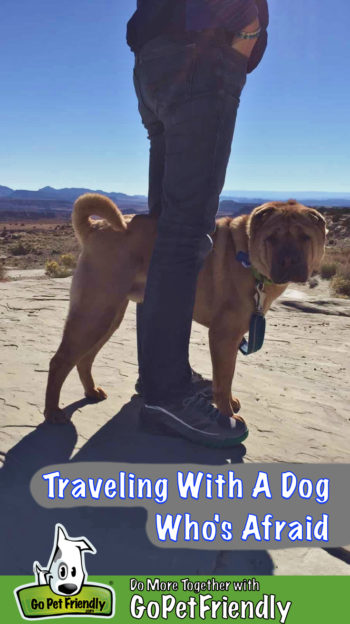
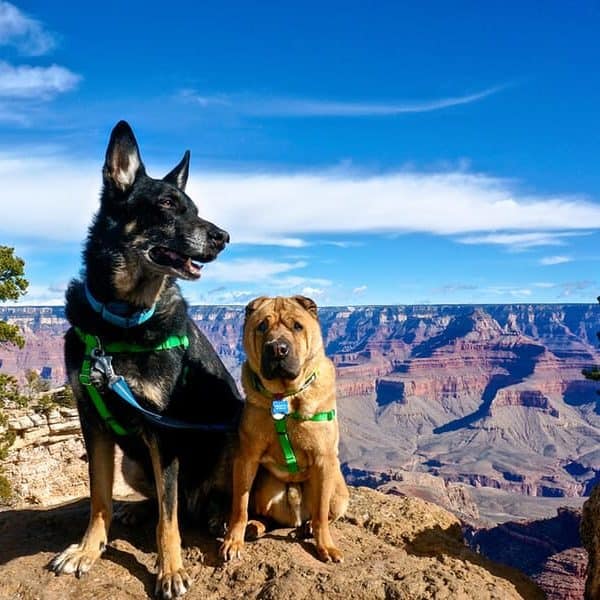
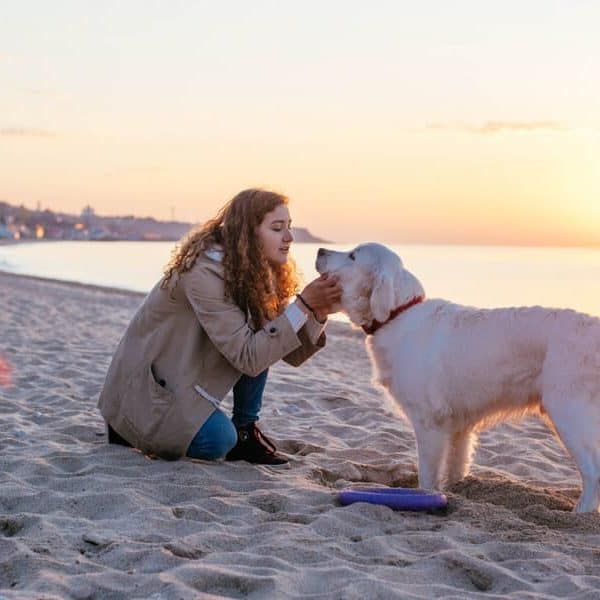
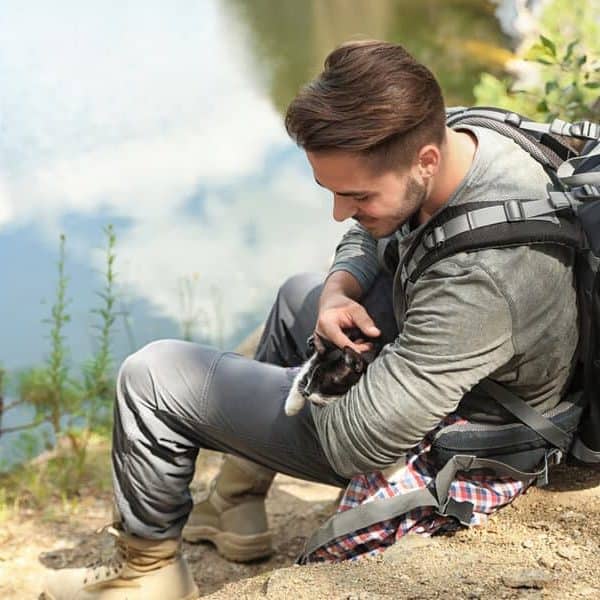
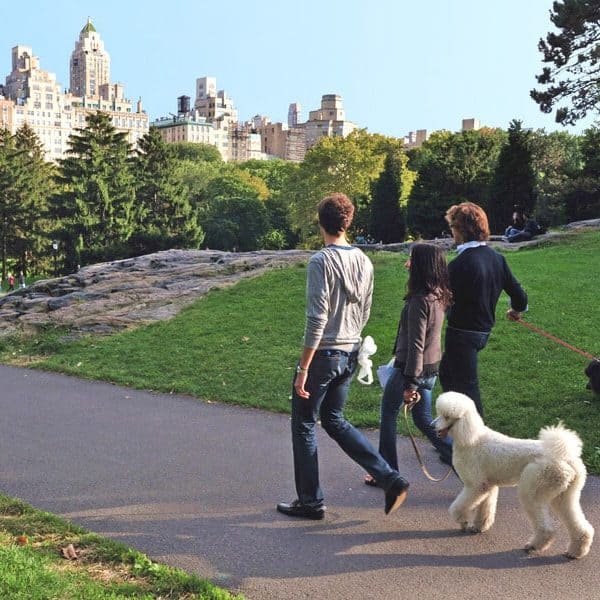
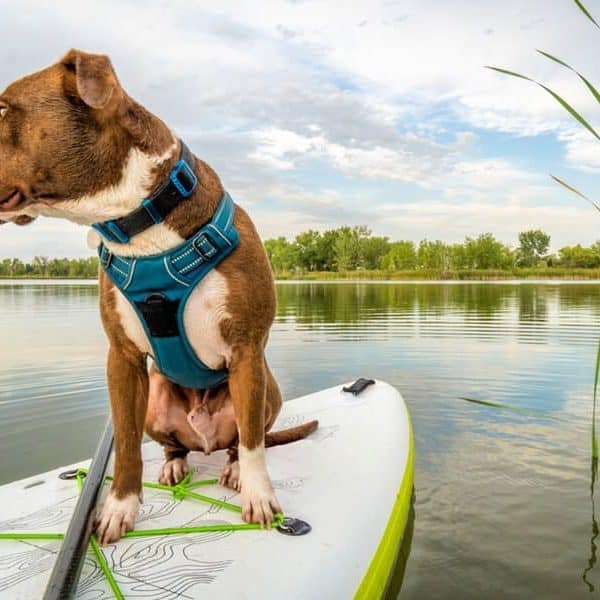
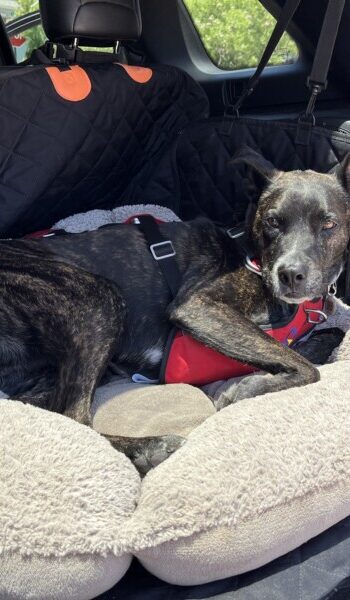
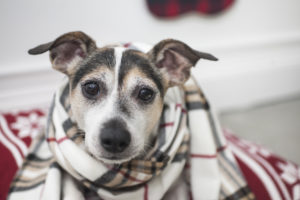



Super cool idea! I’m going to try it with my fearful Shiba.
Good luck, Tawna! We wish you both the best.
Hi Amy!
Did you ever travel with Ty and Buster on an airplane? My guy Vinny is very fearful and anxious around new people and dogs. I normally wouldn’t consider it just because he’s not with me but I’m moving to France. Not taking him is not an option, but I’m feeling at a loss on how to facilitate this move. Any suggestions are helpful!
Thanks!
Amy
Hi Amy! Congratulations on your move to France – how exciting is that?!?
To answer your question – Ty and Buster never flew. But then, I never had the opportunity to move to France! My advice is to find someone to help you plan this move that you trust. Our friends over at PetRelocation.com have a lot of experience, so perhaps that’s an option. Then I would resolve myself to the knowledge that moving day might be a difficult day for Vinny, but he’s resilient and he will be okay. Your confidence in his ability to handle this will make a big difference. Then I’d start slowly training him to use whatever kennel he’ll be flying in while playing the noise of airplane engines, so he’s at least familiar with that much of the process when the time comes. You could also put a sticker on his crate that says, “Not fond of strangers. Please don’t make eye contact.”
I hope that helps and that your journey goes well. Wishing you both the very best!
Quite an interesting read, Amy! With fearful dogs, you can ask people to pet them under their chin or on their chest. It doesn’t scare them as much and will help them to get friendlier with people who are in awe of your pet.
Echoing previous posters’ comments, re: Thank you SO much for sharing your story! DH & I adopted 2 small rescues 3 years ago — both of whom have major fear & anxiety issues, presumably related to their early development time as strays. It’s been extremely challenging to work with them, especially now that we’re coming out of covid lockdowns, and they’re used to having us to themselves 24/7. Whatever headway we had made toward successful socialization got sidelined when local dog parks closed and we had to stay home due to our own susceptibility to health complications. It’s comforting to hear that we’re not alone in our efforts to comfort our nervous littles. Sometimes we’re embarrassed and feel judged when out in public, and have heard comments about various techniques that people have used w/their own pets. I know these folks mean well, but dogs are just as individual as humans (especially our two, who are polar opposites personality-wise, and share different anxiety triggers, as your Ty and Buster did). We’re still trying to figure out what will work best with each of them, and we’ll definitely try out your “get in the garage” move. :-)
Thanks for your note, Sheila! I’m so glad that our experiences with Ty and Buster can help others dealing with similar issues. It can be a challenge, and I often felt judged as well. But those moments when you have a breakthrough and your dog behaves beautifully in a challenging situation are WELL worth it! So, hang in there. Do the best you can. Keep trying different things. Don’t worry about what other people think – they don’t know how far you’ve come! And don’t forget to celebrate the successes along the way.
you always write the best info
Thank you! =)
Thank you. I really needed to hear this. I love my dog Dory and she is a fearful dog. Understanding is half the battle and you taught me some eye opening tools :)
So glad to help, Stephanie! Waggin’ trails to you.